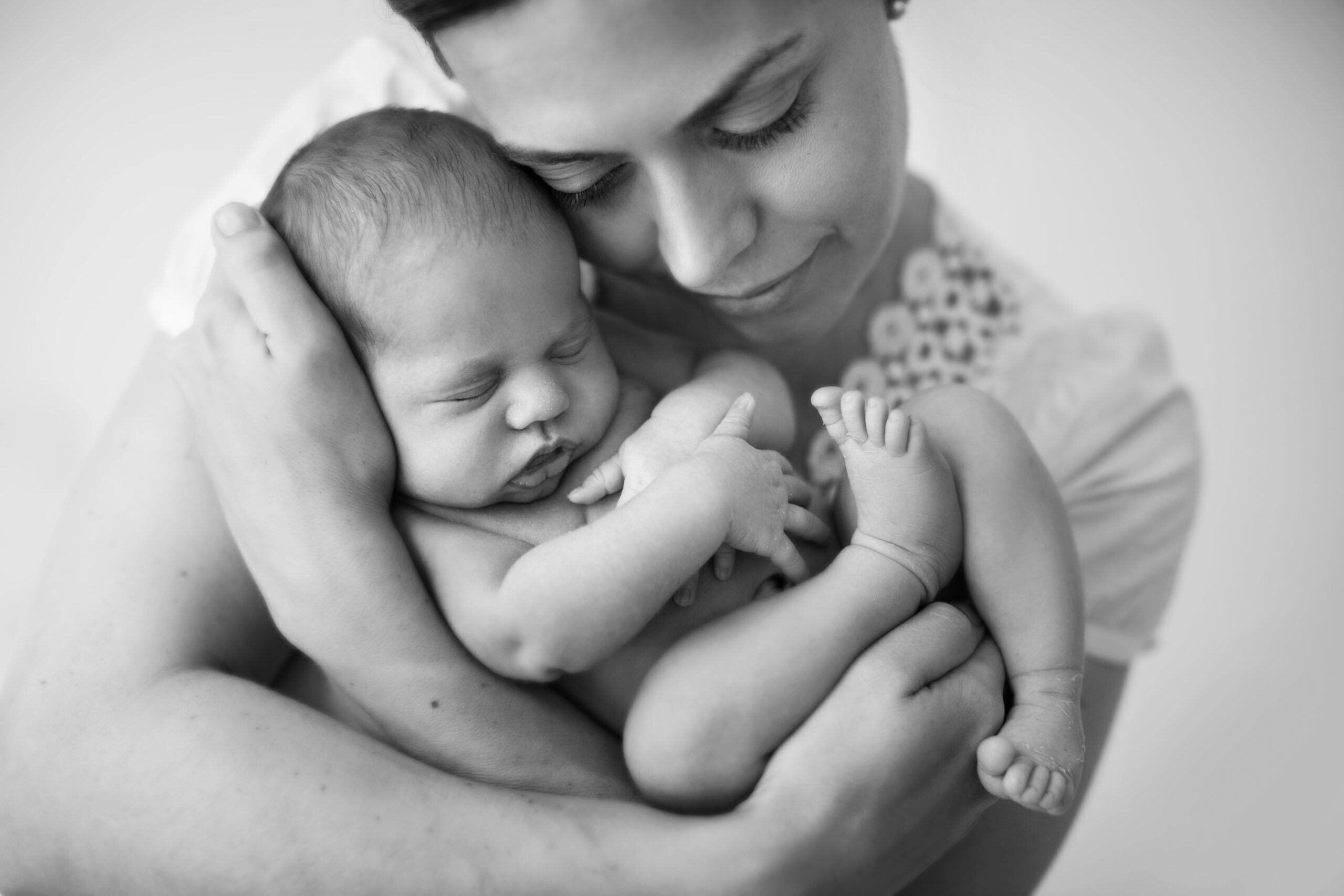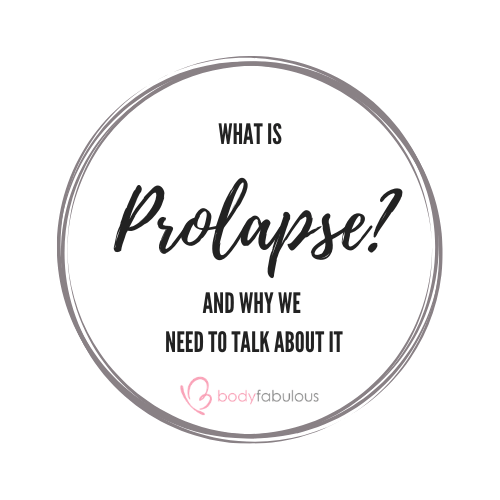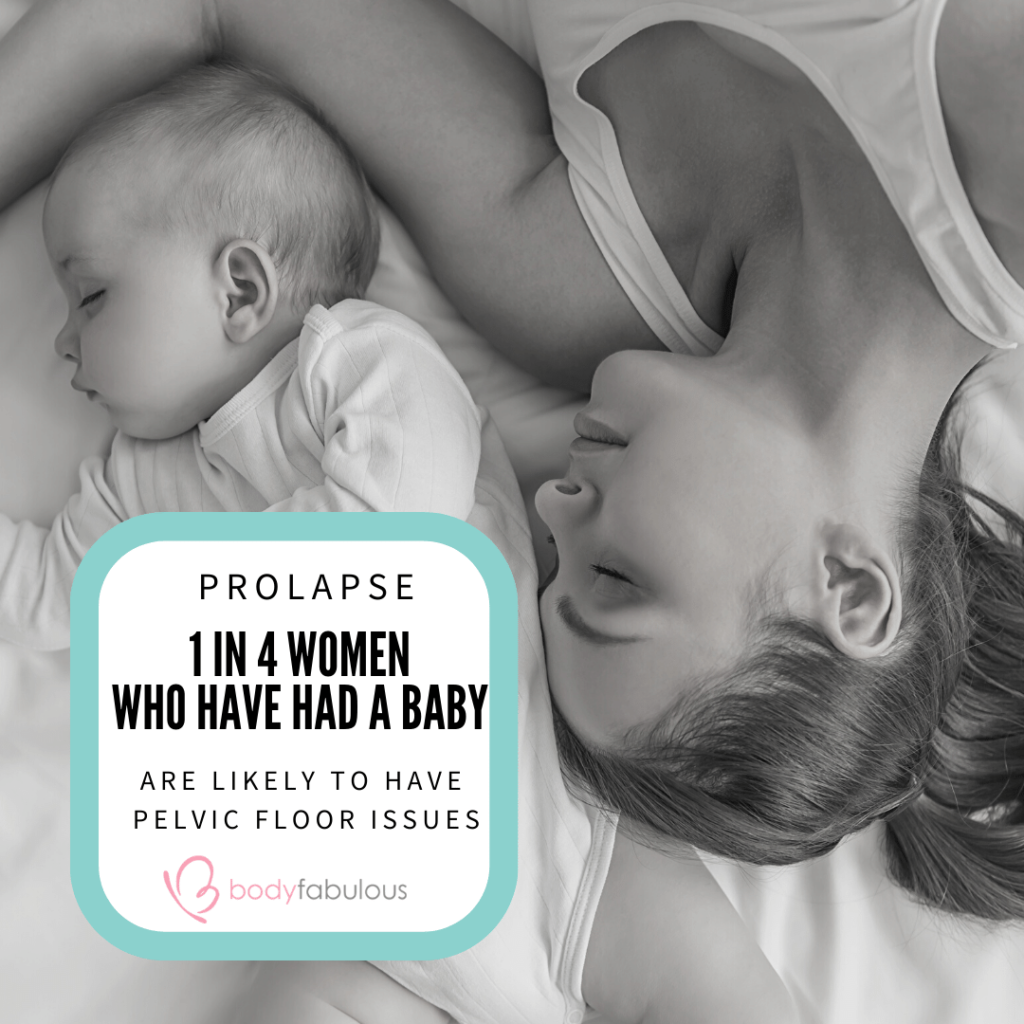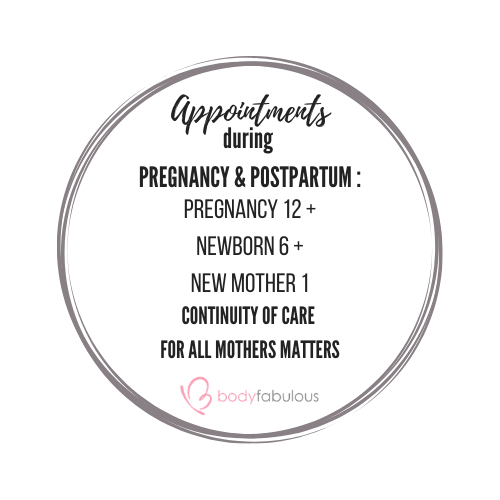Today childbirth is considered far safer than it has been for most of human history. In the 18th century, roughly 1 in 100 women died in the process and today in Australia it is about 6 deaths per 100,000. However non-fatal injuries including prolapse are still rarely discussed and can cause devastating consequences to the quality of life for many women as POP – pelvic organ prolapse affects 50% of women who have given birth.
“According to the Continence Foundation of Australia , over half of all women who have had a child have some level of prolapse. Prolapse can have a substantial effect on a woman’s quality of life and up to one in five women who have a prolapse will need to seek medical help”
Age doesn’t make you immune to prolapse
Prolapse is not something that “just happens to older women”, having a c-section will not make you exempt and even fitness professionals can have a prolapse.
The pelvic floor is a sling of muscle holding up your baby in the womb during pregnancy, it is also supporting all your pelvic organs—bladder, uterus, large intestine and rectum . If this muscle becomes weak, torn or damaged due to a variety of reasons (including intra-abdominal pressure, non optional exercises / movement and birth procedures) the pelvic organs can bulge down into the vagina, or rectum, and that causes a prolapse.
Watch this video by founder Amy Dawes from the Australiasian Birth Trauma Association about her prolapse and why it’s important to start the conversation.
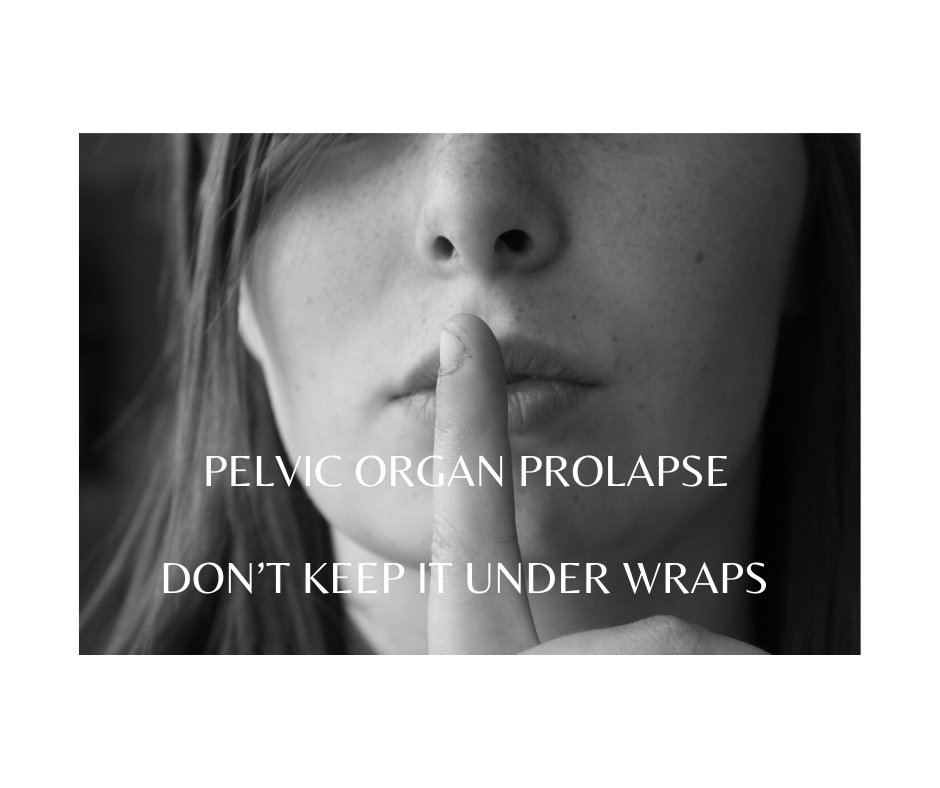
Australia has some of the highest rates of birth injuries, 3rd degree tears and prolapse in the world. Still today women continue to be uninformed that symptoms of prolapse can occur during pregnancy, birth and during postpartum recovery…and that using “poise pads” are not really a solution !
“To invoke REAL change it is important to share the stories of brave women who are prepared to speak out so that others don’t have to suffer in silence. “
Bronwyn is one of these ladies who has shared her prolapse experience in an interview below.
Knowledge is power and that is what we hope to give you.
Trigger warning // birth injuries, surgery, prolapse
My Story of Prolapse by Bronwyn
During or after any of your pregnancies was your pelvic floor discussed or mentioned by your DR/OB ?
I do not recall any discussion about my pelvic floor with my GP or my Obstetrician during my pregnancies or after, it was not assessed or discussed during my 6 weeks postpartum checkup. I do not recall much information being given in the antenatal classes I attended about pelvic floor health other than the basic, “do your Kegel’s” but prolapse was never mentioned by any health care provider.
What symptoms did you first notice ? Did you discuss any of these with your doctor or where you aware about what they could potentially mean ?
After the birth of my children I noticed that things looked and felt very different to what it was like prior to my pregnancies, however I just assumed this was “normal” after giving birth. My symptoms of prolapse came on gradually during my forties, a feeling of heaviness in the vagina, lower back pain and injuries, difficulty with starting a urine stream, difficulty with fully emptying my bladder, difficulties with bowel movements. I never discussed this with my GP until it got to the stage that Perimenopause had started with erratic periods during which the heavy dragging sensation intensified. My Prolapses had also reached the stage where I would have bulging at the vaginal entrance and I would have to try to push it back in and also sit or lay down to help alleviate the pain and discomfort. I only had a very vague awareness about what prolapse was from a few things my mother had mentioned over the years.
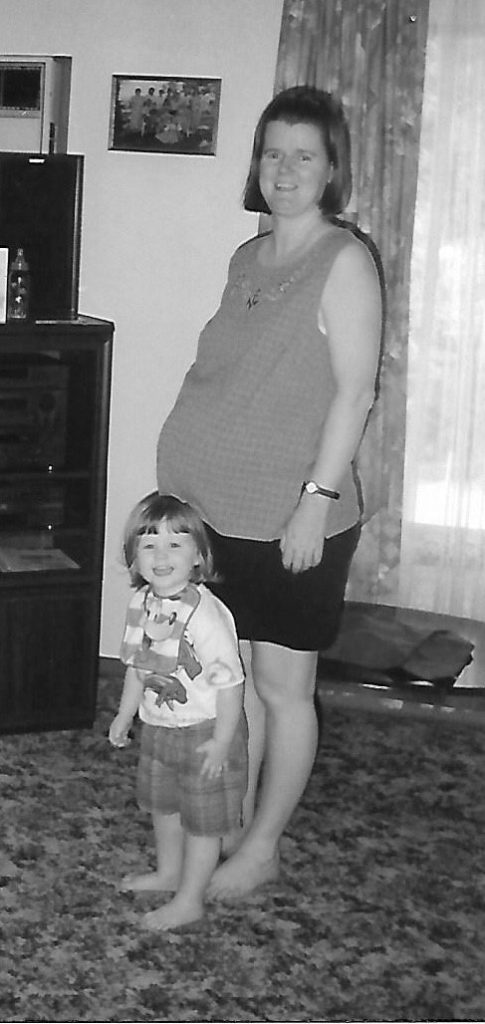
What do you think was the major contributing factor to your prolapse ?
There were multiple factors that contributed to my prolapses (bladder, uterine and rectum). The major contributing factor, I believe, was a forceps rotation during the birth of my first child which caused complete bilateral avulsions of the pelvic floor muscles from their insertion point on the pubic bone. However, I was unaware of the damage my pelvic floor had suffered until it was diagnosed along with my severe prolapses 17 years later. The other contributing factors were my age at childbirth, 32 for my daughter and 35 for my son. Both babies were over 9lbs and I suffered a second degree tear which required surgical repair after the birth of my son. I also had severe diastasis recti and a hernia which required major surgery with mesh when my son was 1 year old. Additional contributing factors to my developing multiple prolapses – bladder, uterine and rectum, included employment that entailed a lot of standing and heavy lifting and eventually Perimenopause.
When did you have surgery ? Tell us about the recovery
I had surgery at the age of 49 in 2012. I had a vaginal hysterectomy with anterior repair (with mesh) as well as a posterior repair and my vaginal vault was sutured to the sacrospinious ligaments. It was a long and painful recovery, however my quality of life improved greatly once I was fully healed. I was extremely careful to allow myself time to heal and in addition to the instructions given to me by my surgeon (unfortunately these instructions were very basic). I had purchased a book by Sue Croft, Physiotherapist, “Pelvic Floor Recovery, A Physiotherapy Guide for Gynaecological Repair Surgery” and it became my bible !
Sue’s book explained everything I needed to know prior to surgery, whilst in hospital and once home. It outlined what to do and when (everyday activities and exercise) during my recovery period and beyond. It was an invaluable resource that I believe enabled me to ensure that my surgery was and remains a success and I have not as yet needed repeat surgery which unfortunately is experienced by many women.
What do you think will help other women to obtain better support and prevention of prolapse ?
Education and mainstream awareness of Prolapse, not just for women suffering from prolapse, but for all women of all ages so they know the symptoms and the risks. I also believe women should be assessed prior to pregnancy, during their 6 weeks postpartum checkup and then on an ongoing basis during their Pap Smear/Cervical Screening exams.
If a woman’s pelvic floor health isn’t optimal she should be made aware of this and given the knowledge and resources to enable her to be proactive in her pelvic health. Pelvic Organ Prolapse (POP) should be a topic that is discussed in antenatal classes, not to scare women but to enable them to be aware of what is a possible occurrence after childbirth and to be aware of what symptoms they may experience so that they can start a rehabilitation program as soon as possible so that their prolapse is not allowed to progress to the extent that mine did.
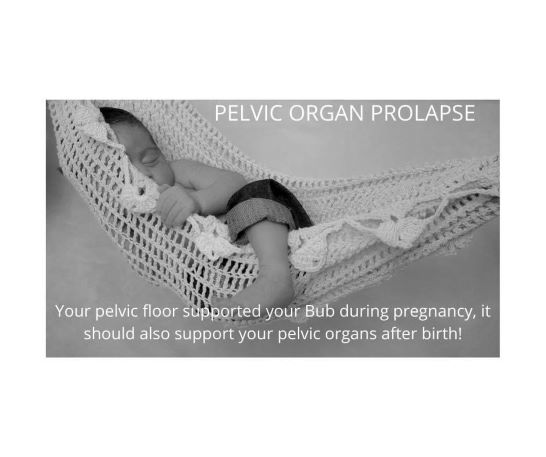
What are some of the best resources for prolapse support ?
I believe it is very important for women not to ignore symptoms or to be embarrassed about what is happening to them. Prolapse has been a “taboo” topic for too long and we need to talk about it out loud and let women suffering from prolapse or any pelvic floor dysfunction know that they are not alone.
Women can get support from their GP, Medical Specialists and especially a Women’s Health/Pelvic Floor Physiotherapist. I also recommend that for any exercise during and after pregnancy all women consult a certified pregnancy and postpartum trainer who understands what movements are optimal for the pelvic floor.
Upon assessment women with prolapse can be given treatment options, both conservative such as physiotherapy treatment and pessaries, as well as surgical options. Women deserve to be able to make an informed decision about their treatment options for prolapse and pelvic floor dysfunction.
Help for women navigating life with POP
Here are the resources I recommended to women, navigating life with prolpase
- APOPS (Association for Pelvic Organ Prolapse Support), myPFM, Voices for PFD, Pelvic Floor First, Pelvic Exercises (Michelle Kenway)
- Australasian Birth Trauma Association
- There are also private Facebook support groups including : Australian Women Pelvic Organ Prolapse and Incontinence Support Group, Tips & Tricks for women living with prolapse, Pelvic Floor Avulsion Support Group and APOPS.
These are wonderful groups where women worldwide can come together to support each other and realise that they are not alone.
Thanks so much for these insights Bronwyn and for helping to raise awareness of prolapse.
If you have given birth (and yes birth includes a c-section), 6 weeks, 6 months or beyond 6 years ago you owe it to yourself to have a good understanding about what a prolapse is. As Bronwyn describes, POP can be “missed” as some women may have no symptoms, or they’ve just simply never really heard of it before and assume any symptoms they’re having are “normal.”….and yep sista – “peezing” is NOT normal and not something that should be just laughed at. Please get it checked out !
Can I exercise with a prolapse?
Is a question I am often asked….
YES, you absolutely can exercise safely with prolapse, and take steps to prevent it during pregnancy and while your body is healing postpartum.
You just need a safe, effective and progressive strategy. I work with many women to achieve this and stay in close contact with their Women’s Health Physiotherapists to ensure all movements are optimal before pregnancy, during and well into the long runway of motherhood.
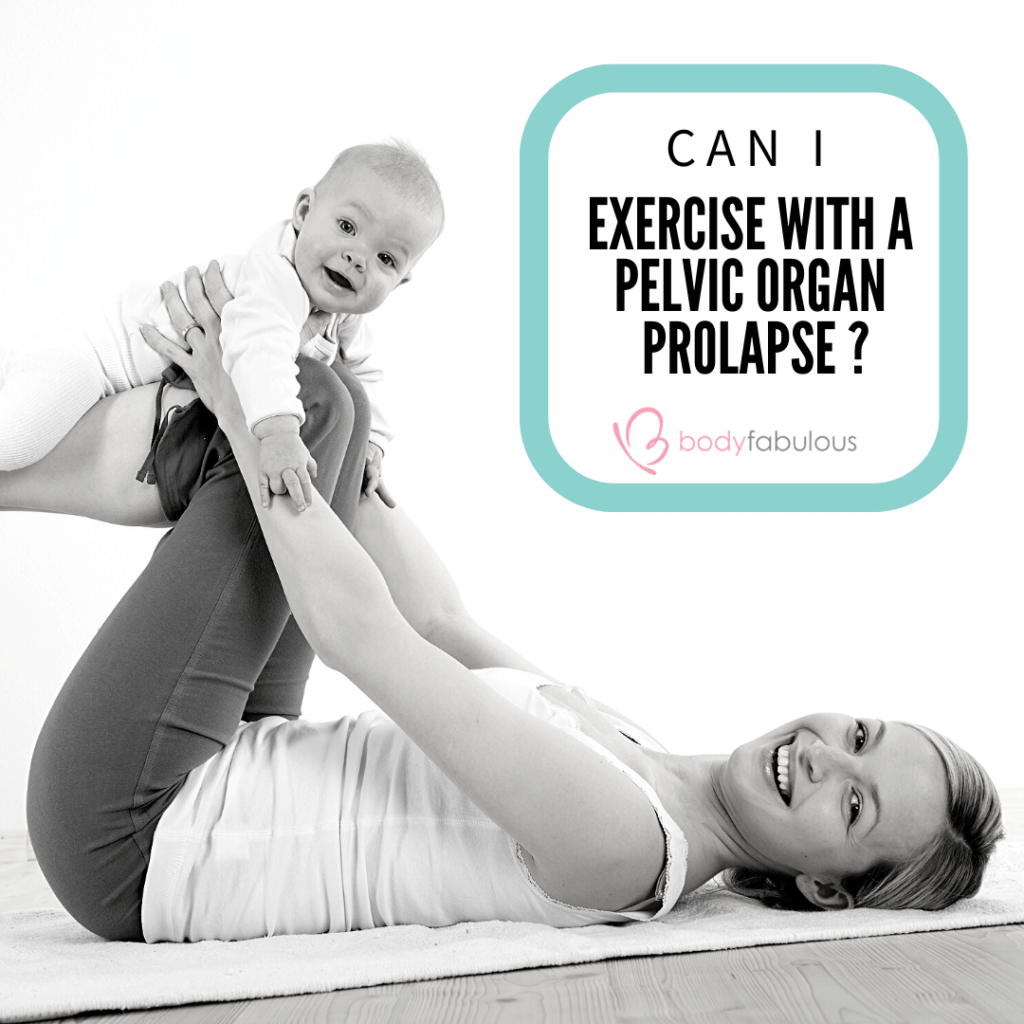
If you are interested reach out or check out my online membership the BFABMETHOD for all stages of pregnancy, postpartum and any stage of motherhood.


About Dahlas
Dahlas Fletcher is one of Australia’s most respected and successful certified and experienced Pregnancy and Female Fitness Trainers. Her goal is to help you be the happiest, most fabulous version of yourself, inside and out.

